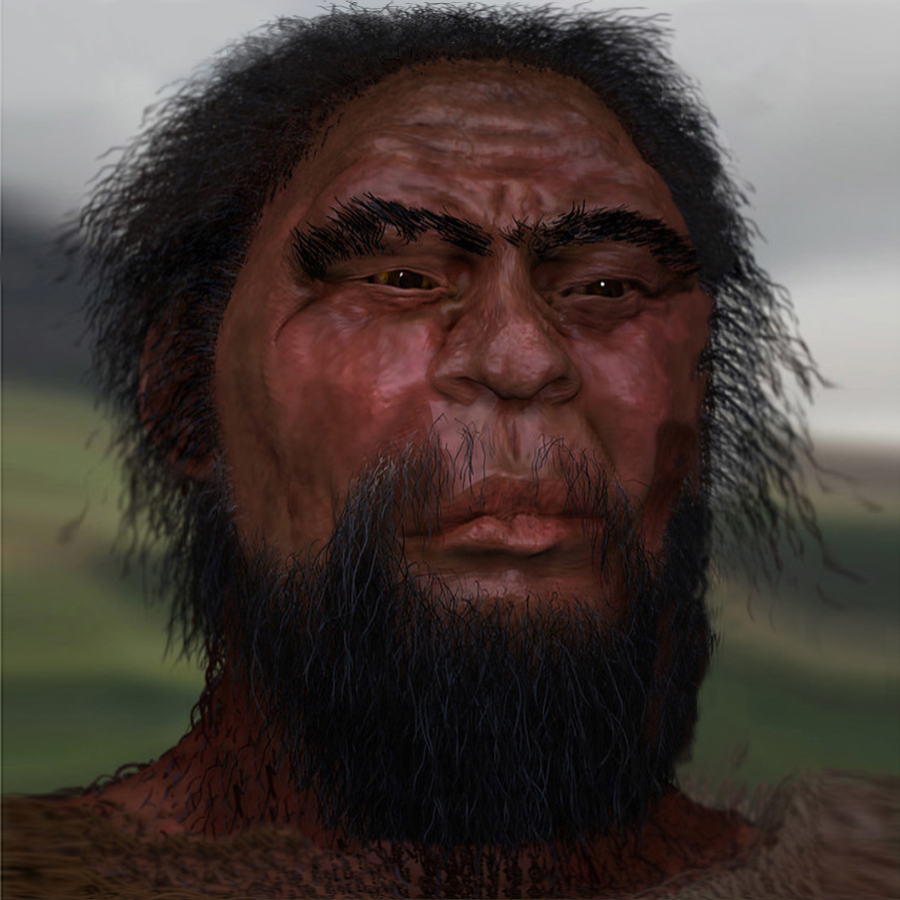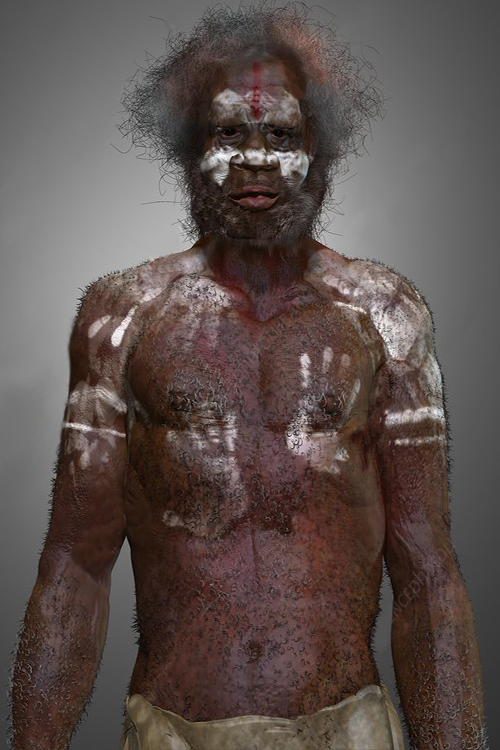A denisovan is a person who belongs to the sentient species
Homo denisova, one of the three sentient species that inhabited the world from the start of the
Pagsian Turning. The population of the denisova (plural) grew from about 30,000 to about 120,000 individuals during the golden age, and then declined due to the volcanic eruptions of Asosan and Mount Toba, reaching a low point of only 1,000 people at the end of the
Ougrosian Turning. Despite some attempts at exploration and expansion, their population never fully recovered. The last surviving group of eventually joined with local
human clans in
Chang Jiang Pingyuan, and genetic mingling over time caused the denisova as a species to fade out of existence by 11,870 BP.
Geographic Extent
Denisova originated in Asia, spread across Chang Jiang Pingyuan,
Indus, and
Zomia. The climate deterioration during the
Recosian Turning made Zomia nearly uninhabitable, isolating the southern denisova in Indus from the the eastern denisova in Chang Jiang Pingyuan and
Altai. The Asosan volcanic eruption in 89,000 BP decimated their population in Chang Jiang Pingyuan and forced the survivors to migrate west into Altai. Later in 73,000 BP the Toba eruption wiped out the southern denisova in Indus. As a result, by the start of the
Ougrosian Turning the denisova had been reduced to a small collection of clans in Altai. Subsequent attempts to migrate southward into
Sunda and eastward back into Chang Jiang Pingyuan were met with extraordinarily bad luck, although they did establish a culture in Sunda that coexisted alongside humans for several millennia before dying out. Eventually, even the denisova remaining in Altai disappeared due to contact with humans.
Physiology
Denisova generally had nearly black eyes and hair, with red-brown skin that ranged anywhere from russet to umber. On average they tended to be slightly taller than
humans and much taller than
neanders. Their faces were wider, with a rounder face-shape but a flatter (less protruding) nose and eyebrow ridge than both humans and neanders. They had long, nimble fingers that contributed to their expertise with and reliance on tools made by weaving reeds or carving wood and bone.
Lifestyle
The first denisova shared a simple and relatively uniform
Awari culture. They were nomadic and wandered primarily in tight-knit family groups of only ten to twenty people. However, unlike the humans and neanders, the denisova were extremely social. Individuals would regularly separate from their own clan and set out to find other nearby clans, trade with them, and bring back both goods and knowledge. They were basketweaving and woodworking people, creating tools made of anything from bamboo to hardwood from deciduous trees, which then become important items for trade when they visited neighboring clans in the area. Every item they traded was simultaneously a functional tool and symbolic of their connection to another groups of denisova.
1
The very social nature of Awari culture led to them being very accepting, usually inviting interaction when they met people of other species. This didn't always work to their benefit: neanders were so naturally reclusive that they shunned the advances of denisova, while humans were opportunistic in a way that usually led to denisovan culture being completely absorbed into whatever human culture they came into contact with.
Decline and Extinction
After the Asosan and Toba disasters, denisovan attempts to explore outside of Altai and establish new cultures were ill-fated. The Tianyuan denisova settled in the lowlying Nihonkai basin, only for it to flood during the
First Tādhēskō. The
Bougain denisova intermingled with and eventually were absorbed by the
Apo Duat humans in Sunda during the
Srīgosian Turning. Finally, although the denisovan attempt to form a cooperative mixed culture with humans in Chang Jiang Pingyuan during the
Second Tādhēskō led to an incredibly successful mixed human-denisovan
Nanzhuangtou culture, genetic mingling over time caused the denisova as a species to fade out of existence,
2 marking the final extinction of the denisova from the world.


